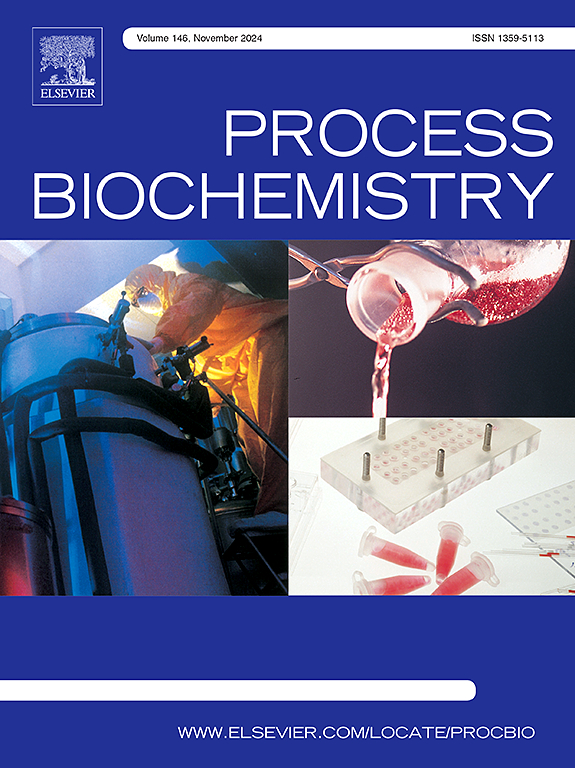Enhanced off-flavor compounds biotransformation by microbial interaction between Saccharomyces cerevisiae and Lactobacillus plantarum assisted by physical excitor and yeast quorum sensing
IF 3.7
3区 生物学
Q2 BIOCHEMISTRY & MOLECULAR BIOLOGY
引用次数: 0
Abstract
This study explored the mutualistic effects of yeast and Lactobacillus co-culture fermentation on degrading off-flavor compounds in duck liver (DL) like trimethylamine (TMA), dimethylamine (DMA), and histamine (HA). Ultrasonication (US) stimuli were applied to adjust microbial interactions and assess their impact on off-flavor metabolism. Degradation rates of TMA, DMA, and HA in single-strain fermentations reached 33 %, 24 %, and 60 %, respectively. In contrast, co-culture fermentation improved these rates to 39 %, 39.7 %, and 75 %. After US pretreatment (40 kHz, 400 W, 30 min), degradation rates further increased to 56 %, 54.7 %, and 90 %, respectively. Non-targeted analysis revealed that co-culture fermentation achieved the highest off-flavor removal, as evidenced by increased esters and decreased aldehydes. Key metabolites, including phenylacetaldehyde, phenylethanol, and D-limonene, were linked to fermentation patterns. US also elevated phenylethanol levels, a yeast quorum sensing (QS) signaling molecule, suggesting that QS-mediated interactions influenced off-flavor compound degradation. Enhanced yeast QS signaling molecules (phenylethanol, tryptophan, tyrosol) contributed to further off-flavor metabolism in US-stimulated fermentation, improving TMA degradation by 18 %-53 %, DMA by 16 %-30 %, and HA by 17 %-53 %. These findings demonstrate that US enhances the biodegradation of fishy substances by modulating yeast-Lactobacillus interactions, offering new insights into biotransformation processes.
求助全文
约1分钟内获得全文
求助全文
来源期刊

Process Biochemistry
生物-工程:化工
CiteScore
8.30
自引率
4.50%
发文量
374
审稿时长
53 days
期刊介绍:
Process Biochemistry is an application-orientated research journal devoted to reporting advances with originality and novelty, in the science and technology of the processes involving bioactive molecules and living organisms. These processes concern the production of useful metabolites or materials, or the removal of toxic compounds using tools and methods of current biology and engineering. Its main areas of interest include novel bioprocesses and enabling technologies (such as nanobiotechnology, tissue engineering, directed evolution, metabolic engineering, systems biology, and synthetic biology) applicable in food (nutraceutical), healthcare (medical, pharmaceutical, cosmetic), energy (biofuels), environmental, and biorefinery industries and their underlying biological and engineering principles.
 求助内容:
求助内容: 应助结果提醒方式:
应助结果提醒方式:


